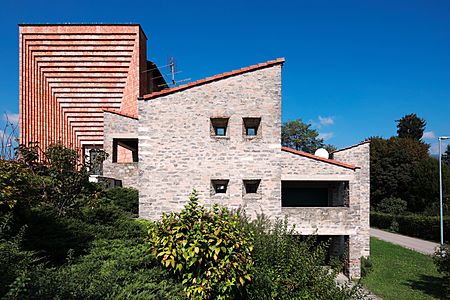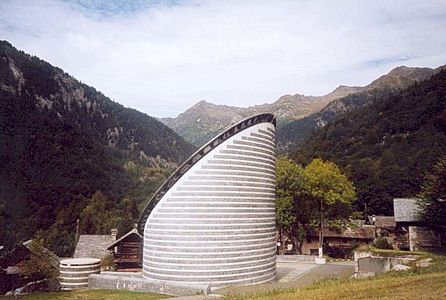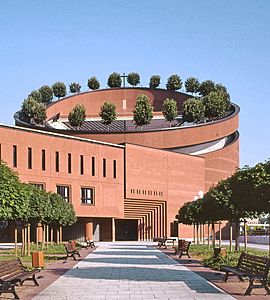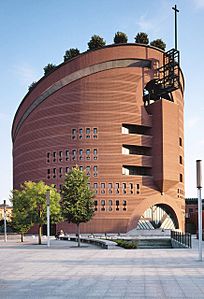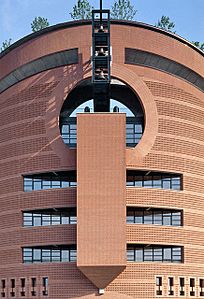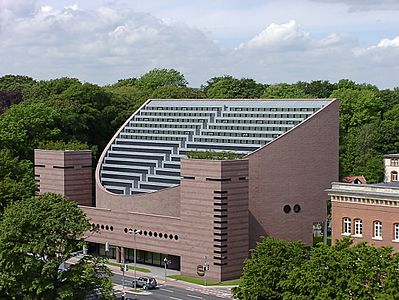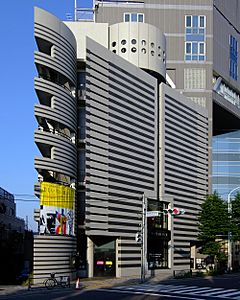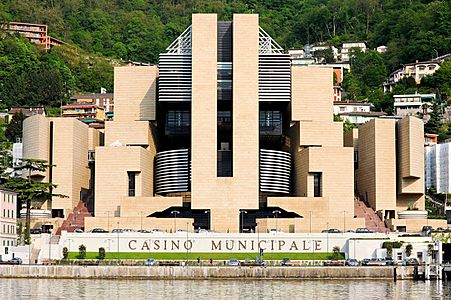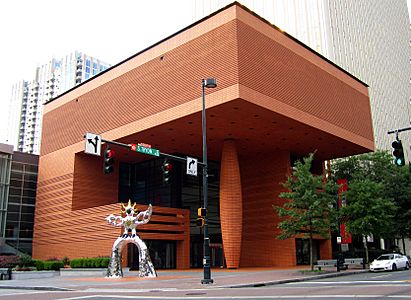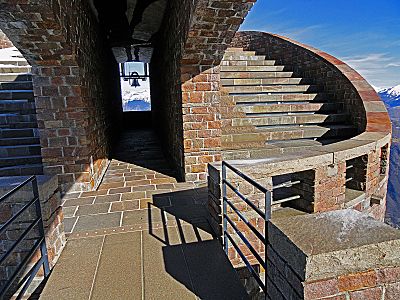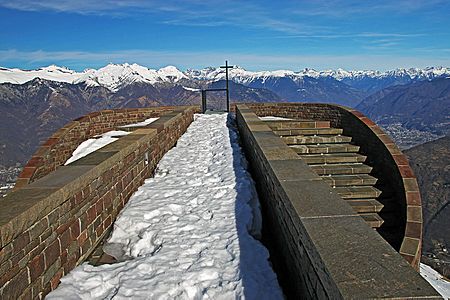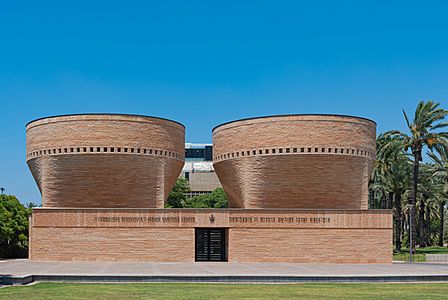Mario Botta facts for kids
Quick facts for kids
Mario Botta
|
|
|---|---|

Mario Botta (2016)
|
|
| Born | 1 April 1943 Mendrisio, Switzerland
|
| Nationality | Swiss |
| Occupation | Architect |
| Buildings | National Bank of Greece, Athens San Francisco Museum of Modern Art Bechtler Museum of Modern Art, Charlotte, NCKimbrell Fiber Innovation Center Santa Maria degli Angeli, Monte Tamaro, Switzerland |
Mario Botta is a famous architect from Switzerland. He was born in Mendrisio, Switzerland, on April 1, 1943.
When he was 15, Mario Botta left school. He started working as an apprentice for an architecture company in Lugano. After three years, he went to an art college in Milan. Then, he studied architecture in Venice and finished his degree in 1969. While studying in Venice, Botta met and worked with very important architects like Carlo Scarpa, Louis Kahn, and Le Corbusier. In 1970, he opened his own architecture office in Lugano.
Contents
Mario Botta's Career
Mario Botta designed his first building when he was just 16 years old. It was a house for two families in Morbio Superiore, Switzerland. Even in this early design, you could see hints of his future style. His buildings often have strong geometric shapes. He likes to use simple forms to create unique spaces. Many of his buildings are made of brick, but he uses many different materials in creative ways.
Famous Buildings and Projects
You can see Mario Botta's unique style in many places, especially in the Ticino region of Switzerland. Some of his well-known works include:
- The Mediatheque in Villeurbanne (1988)
- The cathedral in Évry, France (1995)
- The San Francisco Museum of Modern Art (SFMOMA) in San Francisco (1994)
He also designed the Europa-Park Dome in Germany. This dome hosts many big events at the Europa-Park theme park.
Religious Buildings
Mario Botta has designed several religious buildings. These include the Cymbalista Synagogue and Jewish Heritage Center. His religious works were shown in an exhibition in London. He once said that a church is a special place for architecture. He believes that when you enter a church, you become part of its history and future.
Other Notable Works
In 1998, Botta designed a new bus station for Vimercate, near Milan. It is a red brick building that connects to many other facilities. This project showed the city's growth.
He also worked on renovating the La Scala theater. This project caused some discussion because people worried that old details might be lost.
In 2004, he designed Museum One (M1) for the Leeum, Samsung Museum of Art in Seoul, South Korea. In 2006, he designed his first spa, the Bergoase Spa in Arosa, Switzerland. It opened in December 2006.
In 2014, he received the Javier Carvajal Prize from the University of Navarra.
One of Botta's less known projects is the NBG Insurance Headquarters in Athens, Greece. This building was finished in 2006. It was a team effort with architects Rena Sakellaridou and Morfo Papanikolaou. The building has two solid parts around a public square. It offers views of the nearby Acropolis. The project is mostly underground to fit well with the city. It focuses on movement and light.
Mario Botta's Architectural Style
Mario Botta has been greatly influenced by the Modern architecture movement. He worked with three important Modernist architects: Louis Kahn, Carlo Scarpa, and Le Corbusier. Botta sees his work as a response to Modernism.
His architecture is very connected to nature and is often simple. Botta believes that architecture is a basic human need. So, he creates buildings that show simplicity and the most important things. He says his architecture is "measured by the yardstick of a man's needs."
Materials and Cost
Mario Botta's style is also shaped by what his clients need. Many of his early projects had a small budget. This meant he had to use less expensive materials, like exposed concrete blocks. However, Botta believes that the cost of materials does not define his style. He thinks good architecture can be made no matter what materials are used. He also believes that architecture shows history. His job, in a way, is to make low-cost materials look valuable through thoughtful design.
Gallery
-
First construction of Mario Botta 1961–1963. Parish house in Genestrerio
-
Évry Cathedral in Évry, France
-
Swisscom telecommunication headquarters in Bellinzona
-
La Fortezza building, Maastricht, the Netherlands
-
Watari Museum of Contemporary Art in Shibuya-ku, Tokyo, Japan
-
Casinò di Campione in Campione d'Italia
-
Stadt- und Landesbibliothek (Central library) in Dortmund
-
Cymbalista Synagogue and Jewish Heritage Center in Tel Aviv, Israel
See also
 In Spanish: Mario Botta para niños
In Spanish: Mario Botta para niños


